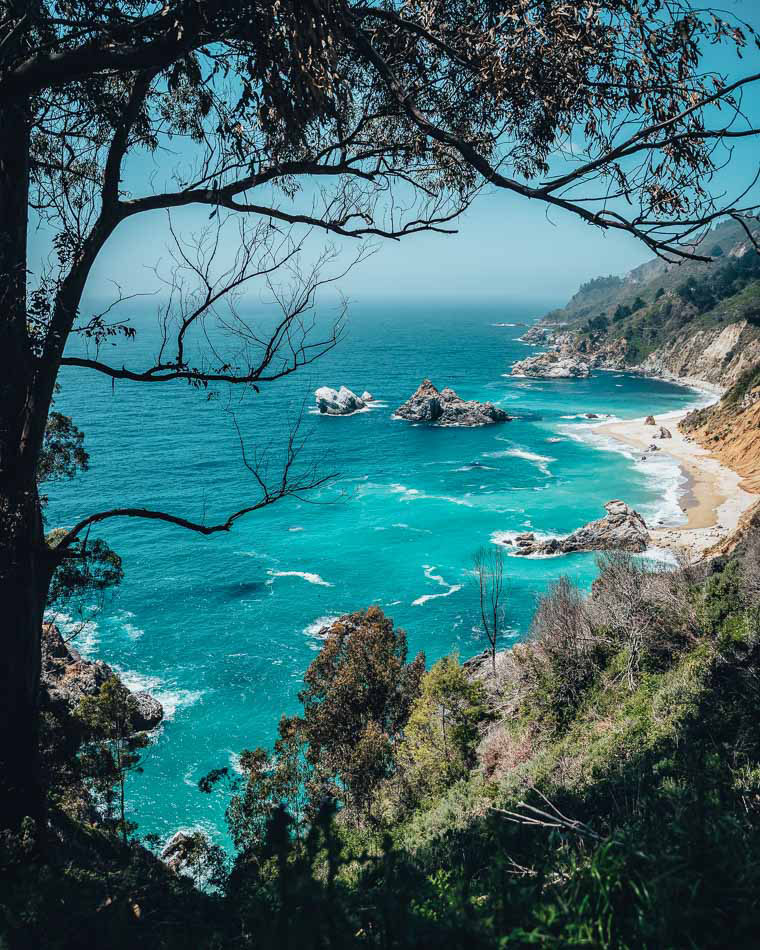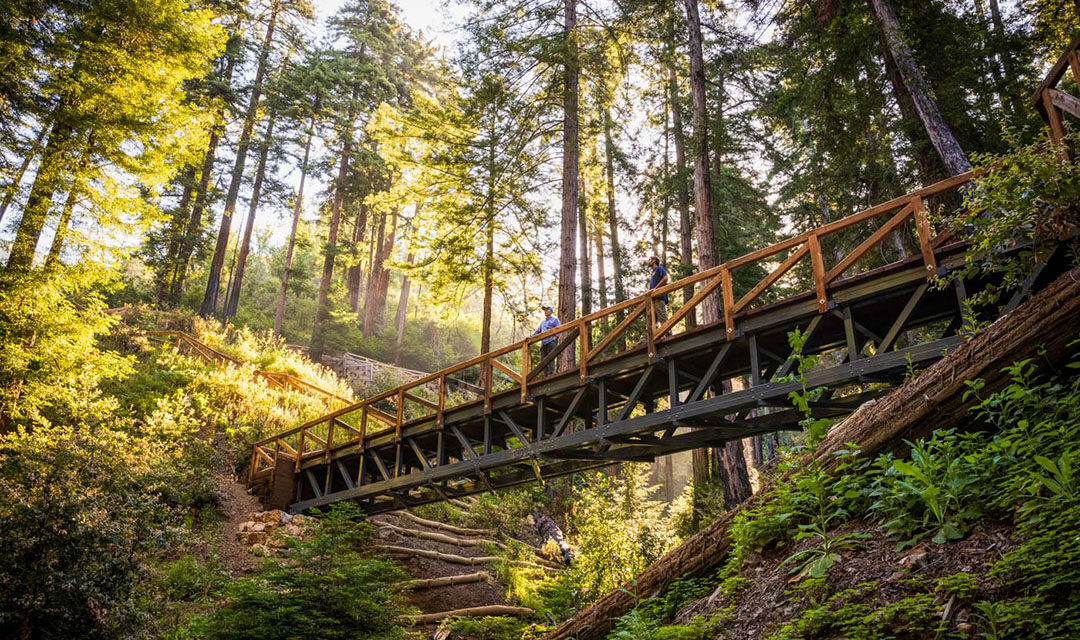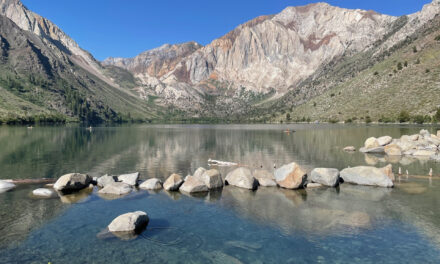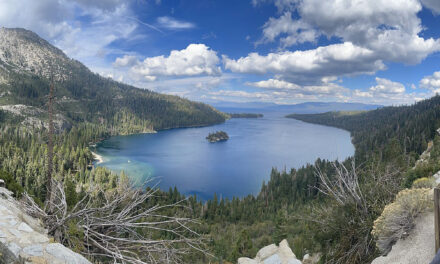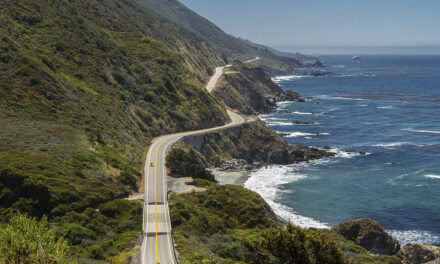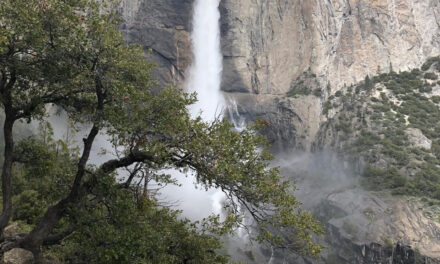BIG SUR — There is a reason why the rugged Big Sur coastline drive is book ended by the eclectic and sometimes garish Hearst Castle, surrounded by a herd of zebras in San Simeon, and the whimsical arts colony with architectural influences of ye olde England that morphed into the Village of Carmel-by-the-Sea.
The 90-mile stretch of the rugged Central California coastline is the embodiment of the inspiration nature has blessed much of the 163,690 square miles that were carved out by man to create the Golden State.
It is not by accident that those inclined to create art with their mind and hands have not only been drawn here but have been able to reach new heights once they walked among its rugged grandeur.
A drive down windy California 1 perched precariously often 1,000 or feet more above some of the most pristine beaches on the West Coast — which many as you travel further south are rarely explored due to the difficulty access — in itself is an experience.
There are very few places even in the Mojave Desert or the stark portion of the Great Basin that pushes against the soaring Eastern Sierra where simply from the comfort of traveling in a car on a state highway that you can get such an overwhelming feeling of remoteness, stunning beauty, and even solitude.
It is a 2 hour and 30 minute drive going the speed limit and without stopping (assuming you have such willpower not to step onto the rugged soil) to pass through the Big Sur coastline.
You can’t help but feel a tinge of sinful bliss knowing you are essentially lollygagging if you incorporated the route into a trip from San Francisco to Los Angeles.
That’s because dozens of miles to the east over the rugged Santa Lucia Mountains, Highway 101 runs its course with traffic speeding at 65 mph while even farther to the east is the internal combustion answer to high speed rail — Interstate 5.
California 1 is a road trip where what you see from the pavement traveling 45 mph punctured by endless tight curves marked 30 mph and 35 mph is devoid of visual litter.
You will quickly understand the sheer lunacy of an early 1960s plan by Caltrans that called for ringing the state with significantly more freeways than scar the landscape today and included making this stretch of California 1 a four-lane freeway.
Give engineers carte blanche in terms of how they can try and harness the landscape along with a blank check and they can do anything. But as Caltrans has learned over the 65 years after such a desecration was pondered in a “what if” exercise and quickly abandoned with howls that would have made John Muir proud, nature in Big Sur country is restless.
It is the wild mustang that you can make some progress with but you can never tame.
That has been proven time and time again as massive slides triggered either by weather, the relentless pounding force of the sea, or primeval thrusts of tectonic plates miles below the surface have helped nature temporarily regain segments of the highway.
In summer, California 1 is overtaken to a degree by those seeking to get away from it all, especially the northern part nearest the enclave of Big Sur that boasts some of the most stunning beaches of the coastline shaped by tidal pools along with enormous rock formations wedded with stately redwoods soaring skyward.
But be forewarned.
Cell service — the curse of 21st century living for those seeking solitude — is limited although for some not limited enough.
Gas is pricey while lodging — save for state campgrounds — will require the removal of a substantial chunk of money from your wallet.
While the costs and limited access to the umbilical cords to the rat race provided by AT&T, Verizon et al are still in place when winter rolls around, the legions of tourists dwindle to more of a drip.
This is when you can soak in the quintessential California experience that nature created.
Winter is also when the Big Sur coastline comes alive with whales, sea otters, and elephant seals.
Monarch butterflies, just like the aquatic creatures, travel thousands of miles to flutter among redwoods. Higher up in the mountains, creatures seem to stir more than in summer. including mountain lions.
It is here in the heavens above you can see bald eagles and peregrine falcons take flight.
If you’re lucky, you’ll spy one of the world’s largest and rarest birds — the California condor — soaring on thermals with wingspans up to 9 feet.
To give you an idea of how precious of a habitat the region, Big Sur is, the California sea otter once sought to be extinct made its comeback from a single colony found 1938 near the world famous Bixby Bridge — the reinforced concrete open-spandrel arch bridge.
Today, Big Sur offers two sea otter refugees — one near the Point Sur Lighthouse and the other in Julia Pfeiffer State Park.
For those seeking elephant seal heaven, there’s a spot seven miles north of San Simeon near a lookout point known as Piedras Blanca overlooking a beach. This is the best vantage point of an area where 17,000 elephant seals live year round.
The males are massive packing a much as 6,000 pounds — the combined weight of three Mini-Cooper subcompact cars but uglier.
If you are lucky enough to see an American peregrine falcon zeroing in on dinner, you can see why it is considered the fastest creature on earth as it slams into its prey at speeds of up to 200 mph.
This is where the California condor was brought back into the wild, where mountain lions are king in California, and where bald eagles were reintroduced to the coast.
There is a less wild side to Big Sur, but you won’t find it in often epic winter storms that slam the rugged coast releasing penned up fury gathered over thousands of miles of ocean in the form of powerful winds and thorough drenching.
The conditions are perfect in Big Sur for the unleashing of nature’s fury.
That’s due to the abrupt welcome storm systems receive hitting land thanks to the Santa Lucia Mountains.
The highest point in Big Sur is the 5,158-foot Cone Peak with a severe 33 percent gradient. Cone Peak is the tallest peak on the coastline in the Lower 48 States.
Most people will end up spending time in and around the community of Big Sur.
It offers a wide variety of lodging options from the expensive and fancy, bohemian inns, clamping style tents, and rustic cabins to campsites. There are more than a few places where from your lodging is a few feet away on the edge of the property that you can look down 1,200 feet below to the ocean and beaches.
There are dining spots, a general store, and gas. If you’re looking for touristy type of places you will be fortunately disappointed.
Just being in Big Sur with its thick green foliage, inspiring redwoods, rugged terrain and pristine beaches along the steep flank of the Santa Lucia Mountains is reward enough. If you are lucky, the mountains will be shrouded in fog.
Hiking is a year round venture not just to the beaches but up into the mountains above. The 19.5-mile round trip Sykes Camp Trail has a 2,100 foot gain and takes you to a popular stream and hot springs in the Ventana Wilderness.
There are a lot of short hikes that will rock your senses including the 0.7 round trip hike down to McWay Falls where an 80-foot waterfall mixes with sea water in a lagoon. In the spring wildflowers grow with abandon. From December to April you can see migrating whales off the coast.
Other do-able trails for almost all skill levels take you into the redwoods and along Big Sur River as well as down to beaches.
Then there are my favorites that cover upwards of 8 miles that take you into the mountains.
Once you see and experience Big Sur, you will understand how it inspired artists such as writers Henry Miller and Jack Kerouac to musicians as varied as Alanis Morissette to the Red Hot Chili Peppers.
It goes without saying if you plan a stay in Big Sur the sooner you book the better even during the winter “off season”.
The go to place for connections to sites for lodging as well as activities such as hiking, whale watching, events and much more is the Big Sur Chamber of Commerce website at bigsurcalifornia.org
To contact Dennis Wyatt, email dwyatt@mantecabulletin.com
